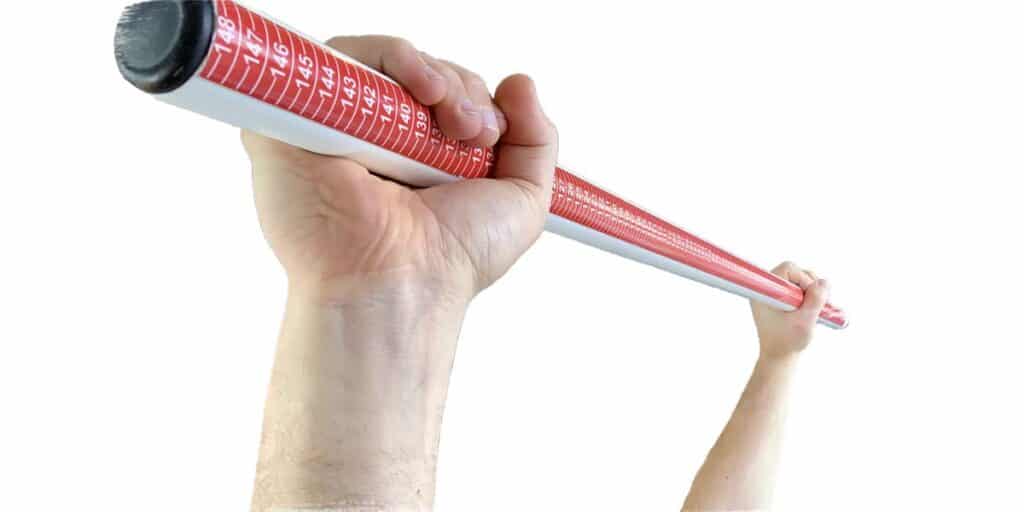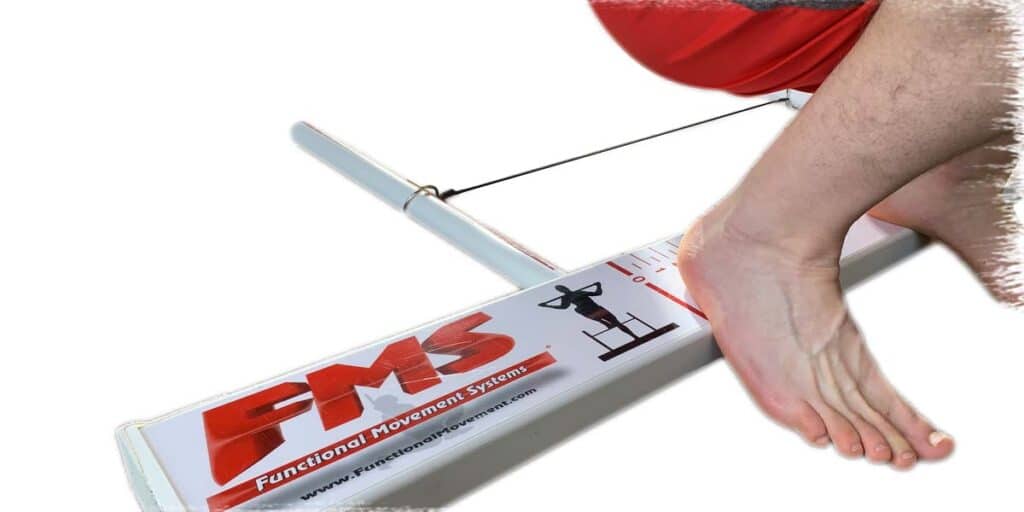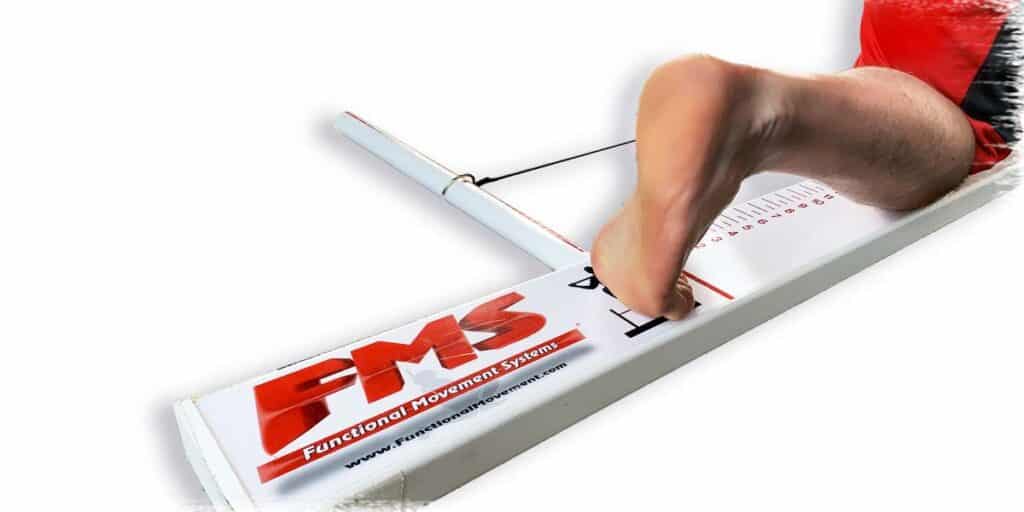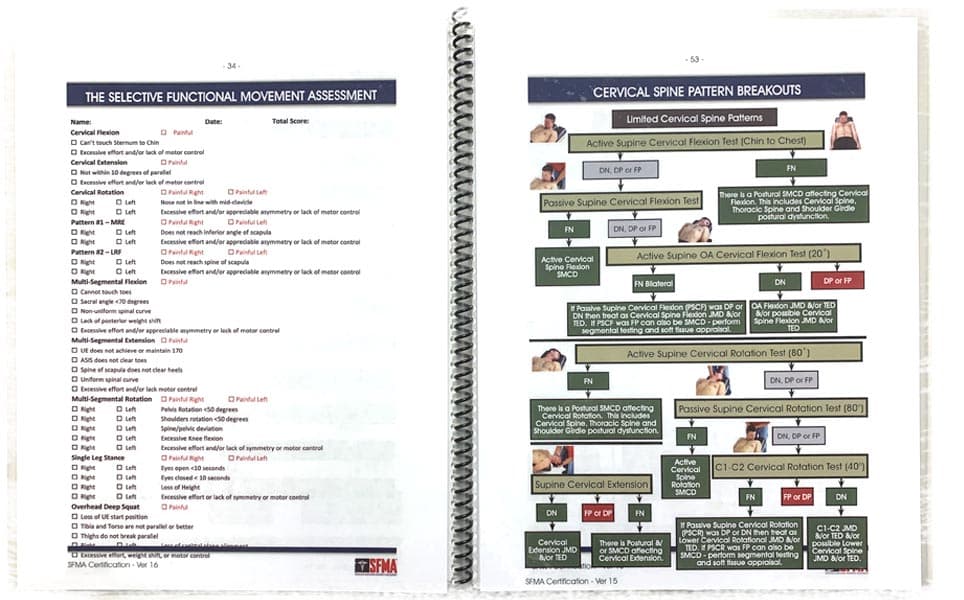The Functional Movement Screen is an amazing assessment tool that can be a critical step to take when seeking to keep your body operating as smoothly and pain-free as possible. While you might have heard of this unique movement analysis system, you may not be fully aware of the amazing benefits it can truly provide.
The Functional Movement Screen can help prevent injury, identify movement deficiencies, identify movement discrepancies, improve mobility, stability & motor control, reduce pain, increase confidence of movement, improve movement awareness and help create customized corrective exercises.

The list covered within this post is still really only the tip of the proverbial iceberg when it comes to the world of benefits that the FMS screen can provide to individuals. To fully understand the world of its benefits in great detail, I recommend getting a copy of Gray Cook’s book “Movement” (link takes you to Amazon). This book is written all around the world of the Functional Movement Screen and contains some amazing information.
Nonetheless, this article is going to go through ten amazing benefits that you may not be aware of when it comes to the true power of the FMS. So, let’s get right into it!
To help you save time, you can use the article headlines below to instantly navigate to that section of the article. These are quick links, so simply click (or tap) on the following article headlines to jump to that particular section.
ARTICLE OVERVIEW:
Benefit 1: Injury prevention
Benefit 2: Improved mobility, stability & motor control
Benefit 3: Pain reduction
Benefit 4: Identifies movement deficiencies
Benefit 5: Identifies movement discrepancies
Benefit 6: Uses a systematic approach to movement correction
Benefit 7: Individualizes corrective exercises for each person
Benefit 8: Improves movement awareness
Benefit 9: Improves confidence of movement
Benefit 10: FMS Integrates with the Selective Functional Movement Analysis (SFMA)
The Functional Movement Screen, which is the brainchild of Functional Movement Systems, is a tool that has been in my personal “toolbox” ever since I obtained my level 1 & level 2 certifications for the system back in 2014.
Related article: The Functional Movement Screen: Why New PT Grads Should Know it
I have used it extensively both when working with clients for personal training as well as when working with patients in the clinic as a physiotherapist. It’s easy, quick and effective to use on all sorts of active and otherwise healthy individuals. What’s even better is that it also has some great research behind it as well.
If you’re in the Calgary area and would like a personal Functional Movement Screen, feel free to head on over to www.towerphysio.ca, where you can set up an appointment to get a screen by yours truly!
Alright, with that little blurb out of the way, let’s get into these benefits:
Benefit 1: Injury prevention
We might as well start with the most widely known (and arguably most critical) benefit of what the Functional Movement Screen can yield: identifying the potential for injury. The fact of the matter is that if you can spot a high likelihood of future injury before it happens, you can either wipe it out completely or at least greatly reduce the chances of it ever occurring, so long as you use the right approach. This is all done with the preemptive approach of correcting those underlying issues that are setting you up for future pain and injury.
Related article: Five Massive Reasons Why Physical Therapy is Important After an Injury
There’s research that’s been done around the FMS’s ability to identify potential for injury in various populations, including various athletes, firefighters and military personnel. Those studies tend to show that the system is able to identify injury potential based on an individual’s overall FMS score or movement dysfunction and/or discrepancies on the various movement tests.
When it comes to the individual’s overall score, it’s been found that a score of less than 14 is a good indicator that future injury may be luring around the corner if corrective movement intervention doesn’t occur.1–6
Benefit 2: Improved mobility, stability & motor control
There are seven specific movement tests within the Functional Movement Screen protocol, all of which serve a unique purpose in evaluating one or more characteristics of an individual’s ability to produce movement. Each movement will either solely or in some combination evaluate a portion of their body’s mobility, stability and/or motor control.
Effective and functional human movement needs to have an appropriate blend of all three of these movement characteristics. Having an imbalance of each is like having each individual tire on your car inflated to vastly different levels from one another – sure, the car will still run but you’ll be experiencing a less than ideal ride (not to mention higher potential for breakdown the more you use it).
Benefit 3: Pain reduction

It should go without saying that once you’ve completed a FMS of your own, the results of the system will be able to begin to give you the ability to reduce or eliminate generalized pain coming from issues such as tight or immobile tissues, dysfunctional movement patterns, muscle weakness, etc. Of course, you must put in the work to make this happen, but so long as you do, there is a good chance that you’ll be experiencing less of those nagging aches and pains that you may be experiencing when exercising, playing sports or even just completing your activities of daily living.
And when it comes to knowing how to best begin approaching the pain reduction process using the right movements and exercises, there’s no need to worry – the system has you covered (see benefit 7).
Benefit 4: Identifies movement deficiencies
If you’ve got some deficiencies in your movement, there’s a good chance that the screening process is going to sniff it out. Don’t worry, you can find dysfunctional movement in anyone above the age of eighteen years old if you look closely enough.
Broadly speaking, movement deficiencies refer to lacking available range(s) of motion within a body part or globally throughout the entire body. When movement within an area of the body is lacking, it tends to force other areas of the body to compensate in some fashion as a means to successfully execute and produce the desired movement (albeit in a dysfunctional manner).
Related article: The Massive Benefits of Going to Physical Therapy Before Injury
Movement compensation is a double-edged sword; it allows you to produce the otherwise impossible movement for your body, but at the expense of putting chronic dysfunction into the movement system, which only leads to pain, injury and further movement issues down the road.
Thankfully, the FMS does a great job at determining where in the body movement deficiencies are coming from and if they’re likely due to mobility issues, strength/stability issues or motor control flaws. What this means for you is that you’ll stand a better chance of correcting these deficiencies after the movement screen determines where they’re likely coming from.
Benefit 5: Identifies movement discrepancies

Movement discrepancies are different from movement deficiencies. While in a general sense a movement deficiency refers to some form of inadequate movement, a movement discrepancy refers to unequal movement on one side of the body when compared to the other side.
One of the easiest ways to predict future injury in individuals is to determine the extent of movement dysfunction that exists from one side of the body in relation to the other.7–9 With the FMS, it examines movement discrepancies in the shoulders and the hips and the core for specific movements that can often be quite deficient and filled with discrepancy. It does this with multiple tests, giving the FMS administrator a good idea as to how the entire body is performing from one side of the body to the other.
Benefit 6: Uses a systematic approach to movement correction

Once the FMS has picked apart your movement (don’t worry, it’s for the better), it doesn’t take a haphazard approach in terms of prioritizing the correction and restoration of your movement.
The benefits of a systematic approach are not only that it takes out all the guesswork in what’s most important to begin correcting, but also that it starts with the most likely sources of future injury and works its way down from there. This is all done based on how your movements were scored/recorded and which of those movements were most problematic.
The other great thing with this systematic approach is that the system will target multiple issues that can simultaneously be cleaned up/improved when prioritized correctly. So, rather than working on improving movement issues in a nonspecific manner, the FMS will be able to help restore proper movement to one area of your body simply by restoring movement in another, more critical area. This “trickle down” effect of movement correction is one of the cornerstones to this system.
Benefit 7: Individualizes corrective exercises for each person
When it comes to getting you on track for moving better (and likely feeling better), the FMS looks at you as an individual and the results of your movement abilities. What this means is that there isn’t a simple “cookie-cutter” approach given for exercises that you need to do.
Each of the corrective exercises and movements given to you from your FMS administrator (so long as they are level 2 certified) will all be given for a specific purpose in terms of attacking your movement issues and restoring your movement quality.
Functional Movement Systems have their own suggested exercises to be prescribed based on the individual’s FMS results, and while FMS administrators can also prescribe other various interventions (based on their respective scope of practice) outside of what FMS may recommend, so long as the practitioner is level 2 certified, they will be able to give you a targeted corrective exercise regimen based on your own individual needs.
Benefit 8: Improves movement awareness

It can be pretty eye-opening for a lot of individuals when going through a movement screen as to how well or poorly their body is moving. Sometimes we may perform better than we’d initially expect for a few of the FMS movements, but for the vast majority of the time it’s actually the exact opposite; we realize that we aren’t exactly moving with any form of supple poise but rather that we’re moving with the mobility of piece of braided steel cable.
While this can be disheartening to learn of at first, it is in fact the prerequisite to beginning to move better. After all, you can’t fix a problem if you aren’t aware of its existence. And that’s exactly what the FMS is designed to do – find the underlying issues that predispose individuals to dysfunctional movement and potential sources of injury.
As your eyes become opened to the current state of your movement abilities, you become acutely aware as to how your body performs with day-to-day movements. As your awareness improves, you begin to find it easier to tune into your body in regard to what it struggles with and what it does properly and efficiently.
And it’s only with this improved movement awareness that we begin to open up and carry out an ongoing conversation with what it’s telling us through movement and what we’re telling it to do through corrective movement strategies.
Benefit 9: Improves confidence of movement
One of the best feelings ever when it comes to doing physical activities and movements is knowing that your quality of movement is on point. Confidence is everything when it comes to challenging your body, or even when just performing activities of daily living. Living with uncertainty or the fear of potentially injuring yourself is no way to live.
When you begin to improve the quality of your movement, you can certainly feel it. It’s hard to have confidence with your movement when something feels tight, weak or immobile. But as you start to make improvements with these issues, you begin to feel in control of your situation and thus begin to understand what healthy movement constitutes both in terms of how it looks and how it feels.
You then no longer find yourself entertaining that voice in the back of your head that wonders if your movement quality and quantity is adequate or sub-par. You can then also block out the voice that wonders if you’re physically moving in appropriate, healthy ways or not; the guessing is taken out of the picture, leaving you with confidence in moving forward with your physical pursuits and movement patterns.
Benefit 10: FMS Integrates with the Selective Functional Movement Analysis (SFMA)

Sometimes some of the movements that the FMS requires an individual to do are in fact painful for one reason or another. If this happens to be the case, the FMS protocol is to then refer out to a qualified health care specialist with the appropriate scope of practice for assessing and treating the underlying cause of pain.
What’s great about the FMS is that it is essentially the “little brother” of the more advanced, more thorough and more complex version of its big brother, which is known as the Selective Functional Movement Analysis (SFMA). Just like the FMS, the SMFA is also created by Functional Movement Systems. Certification in the SFMA can only be obtained by those with health care licenses such as physiotherapists, chiropractors, medical doctors, etc.
Oftentimes these professionals are also certified in the functional movement screen system, meaning they can flow right from the FMS into the SFMA if desired. This is great since the SFMA essentially will pick up right where the FMS leaves off when it comes to an individual experiencing pain.
If your movement practitioner only has an FMS certification but then refers you to an individual for an SFMA, they can pass along the results of your movement screen to the practitioner, who can easily interpret the FMS results and immediately know where to begin performing “breakouts”, which are the specific movements of the SMFA that are performed in order to determine the underlying reason or cause for that individual’s pain.
Ultimately, what this all means is that if you hit a roadblock in your functional movement screen (i.e. experience pain), a second, much more advanced system exists to further examine the cause of that pain in order to help you recover, move better and improve your quality of life.
Final thoughts
While much of the general population isn’t terribly familiar with the Functional Movement Screen, those who are tend to only know a few reasons at most as to how and why it can be so beneficial. The benefits of the FMS go way beyond injury prevention and ultimately all work together in a combined manner to help individuals move better, move with confidence, reduce pain and avoid future injury.
All of these benefits in turn lead to a better life experience for those who are wishing to continually maintain or improve their physical movement abilities, which help to maintain or even improve one’s overall quality of life. No doubt about it, the FMS is a simple yet highly reliable system that brings something unique and highly beneficial to the table.
References

Hi! I’m Jim Wittstrom, PT, DPT, CSCS, Pn1.
I am a physical therapist who is passionate about all things pertaining to strength & conditioning, human movement, injury prevention and rehabilitation. I created StrengthResurgence.com in order to help others become stronger and healthier. I also love helping aspiring students and therapists fulfill their dreams of becoming successful in school and within their clinical PT practice. Thanks for checking out my site!


